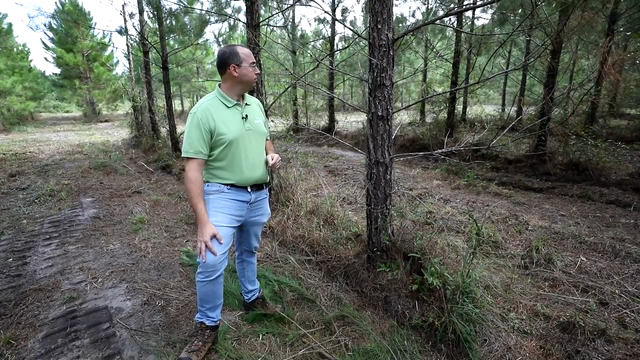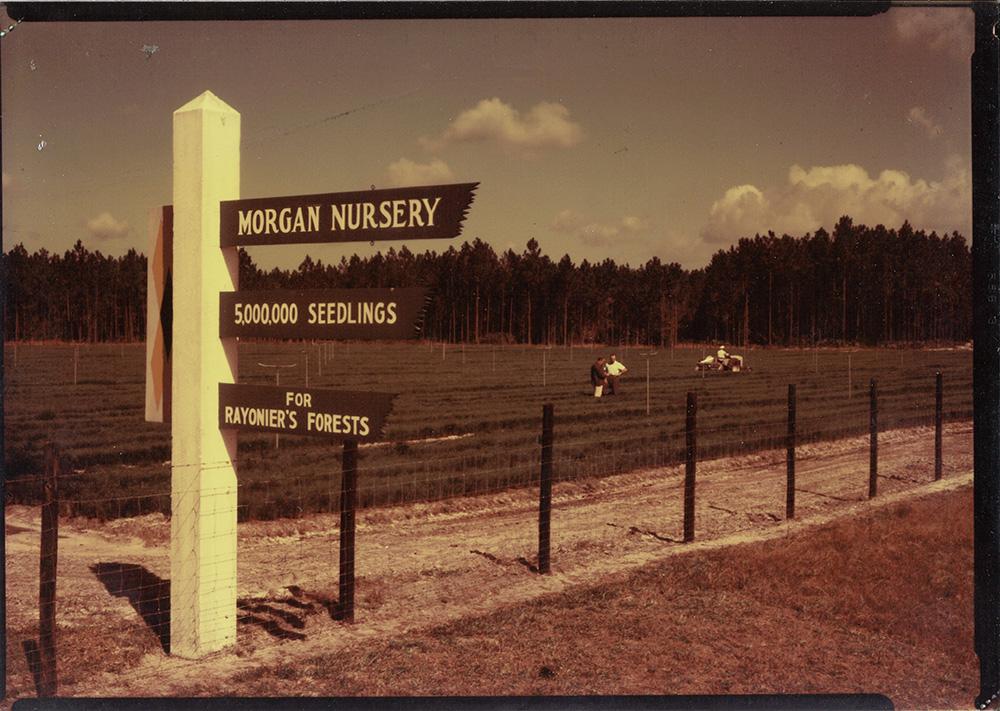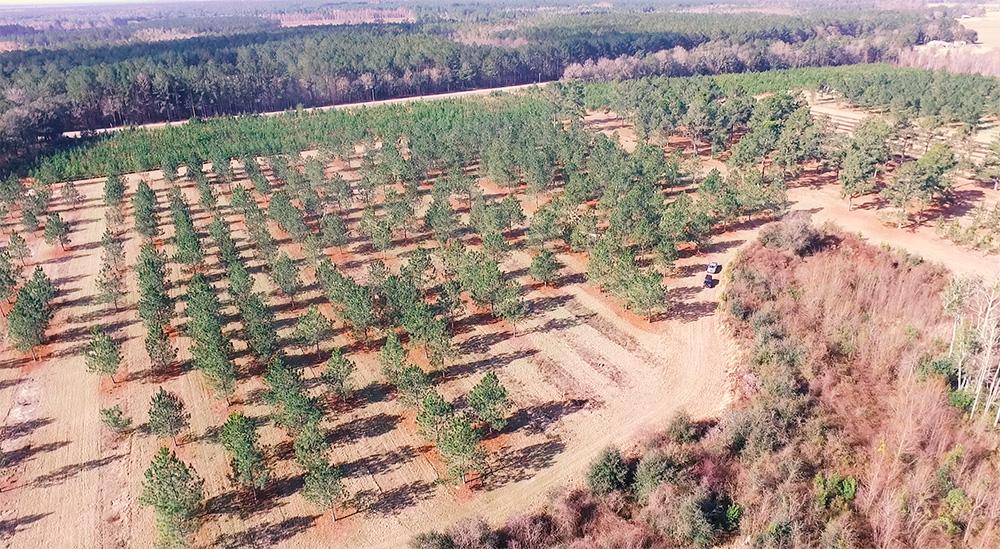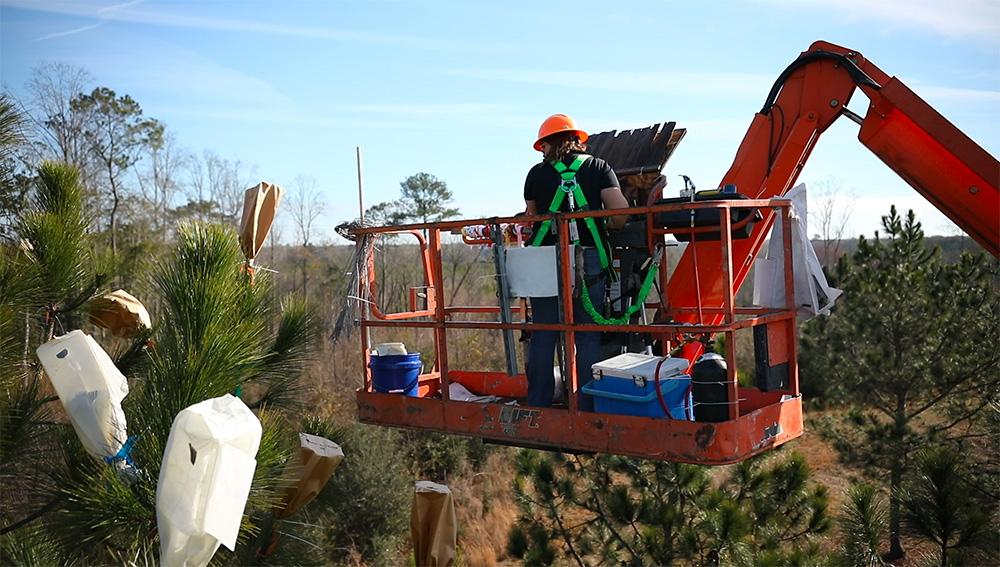How Research Forests Help Grow Healthier Trees
Rayonier employees are putting our resources to work for you! We take you behind the scenes in this series of Rayonier videos and articles.
If you could go back in time 50 years and observe a commercial forest, you would notice a vast difference from the forests today. Modern trees grow faster, straighter and healthier than their ancestors. Why is this, exactly?
It’s not because the climate’s become more hospitable or because there’s less potential for disease. It’s also not due to genetic engineering experiments. The superior commercial forests we have today are a product of rigorous and on-going forest research.
An introduction to forest research
For over 60 years, Rayonier has dedicated hundreds of acres of forests to researching and producing seed.
We use natural tree breeding methods that produce the tallest, strongest and healthiest forests. Today, we have over 200 acres of seed orchards in production. They produce more than 90 percent of our seedlings.
For an inside look at what goes into this research, we talked to Rayonier’s Manager of Genetic Resources David Barker, PhD.
“One of the main areas we focus on are what’s known as ‘field tests’ or ‘progeny tests,’” David explains. “These are research studies in which we try to determine which pine families grow the best in terms of how fast they grow, how straight they grow and how disease-resistant they are.”
In the Southeast, Rayonier researches loblolly and slash pine and focuses on reducing their susceptibility to common diseases like pitch canker and fusiform rust. The researchers observe how trees from different families grow over time, then select the best performers.
“Once we have the information from the study, we know which families we want to choose to make seeds from. Those are the ones we graft into seed orchards.”
Rayonier’s seed orchards look different from your typical commercial forest. David explains that’s because we space the trees further apart to encourage lots of big branches which yield better pinecone production.
An overview of the tree research process
The research team is constantly working to improve our tree families.
But unlike other crops that grow and produce quickly, such as grain or produce, tree breeding and genetic improvement has a longer cycle.
Even when a tree seems to grow well, the researchers have to ensure it is the genetics (rather than solely the growing conditions) that made them high performers.
“So, if we have some trees we’ve identified that seem good, we still need to wait several years to grow seedlings from those trees to make sure they’re good parents,” David explains.
Once a high-performer has been identified, the whole process goes like this:
- First, we have to get seeds for research studies, which takes 3 to 4 years to produce. This step would take even longer since pinecones aren’t produced until a tree is about 7 years old, but through the process of grafting, cuttings from high-performers fuse onto an older tree, which will compel them to produce cones faster. After a successful graft, it still takes a pinecone 18 months to reach maturity. You can learn more about a pinecone’s lifecycle in our pinecone collection story.
- Secondly, once seeds are produced, we plant the seeds into the ground to grow the trees. It will take another 4-6 years for the trees to be mature enough to be measured for growth, disease resistance and other traits of interest.
- Third: “With that data you can pick the best families and put them out into a seed production area,” David explains. “Then you have another 5-6 years to produce seedlings to go to the nursery. But we’re always doing parts of that process every single year. And there’s a seed harvest once a year.”
With each of these steps constantly in motion, “the improvement is constant,” says David, who oversees the entire process—from seed to super-seed.
It takes a village to create the strongest, healthiest trees
Improving trees is a long-term, multi-faceted and precise process that takes a diverse and dedicated team.
“We have five people on Rayonier’s staff spread across Georgia, Florida, and Alabama, and everyone gets to be involved to some extent in all aspects of the program, both research and operational seed production,” David says. “Three members of the team have a post-graduate specialty in forest genetics.”
But it doesn’t stop with that small team:
“There are a lot of people who support this work. For example, I’m standing here with a contractor who’s learning the ropes on grafting and the process of replicating seed orchard parents to put into production.”
There’s more labor, too, in producing “operational” seeds that will go to the seedling nursery and then be replanted in forests across the U.S. David says 30-40 contractors help harvest cones, pollinate trees, and do other tasks for the team.
“We also collaborate with a number of universities which have programs coordinating research work across multiple private companies as well as state forestry organizations. Through this we get to work with faculty and students who are educated in the field. It takes a lot of folks!”
The impacts of forest research go far beyond enhancing yields
Rayonier invests in tree improvement research to create more viable, faster-growing and more profitable forests. However, the benefits of this work extend far beyond our bottom line.
Tree improvement research also helps protect and enhance the environment by increasing the amount of healthy trees in our forests.
“If trees are healthier, we’ll retain more per-acre and they’ll be bigger, which means they’ll sequester more carbon and offer more benefits to local ecosystems,” David says.
For those concerned about genetically-modified commercial trees carrying pollen to non-commercial forests, it’s a non-issue. Despite the genetic research that goes into creating these forests, Rayonier does not genetically engineer trees. The “crossing” the research team does involves controlling pollination to direct the natural reproductive process, similar to breeding the best race horses. To do it, they simply cover young pinecone flowers (the female cones) with bags just before the flowers open to receive pollen. Then the team injects the bags with pollen (which comes from male pinecones) from high-performing tree families to ensure the future seeds have the best male and female parents.
You can watch how controlled pollination works in our video story, How Foresters Use Controlled Pollination to Improve Tree Performance.
The real bottom line: forest research leads to better seeds that create healthier forests for all.
Want a first-hand look at a Rayonier research forest?
If you haven’t watched it already, scroll back to the top of this article to watch our video interview with David as he takes us through some of Rayonier’s research forests in Yulee, Florida.
And a big thank you to David and his team for taking the time to help us understand a little bit more about the fascinating work they’re doing for Rayonier, our forests and our planet.







